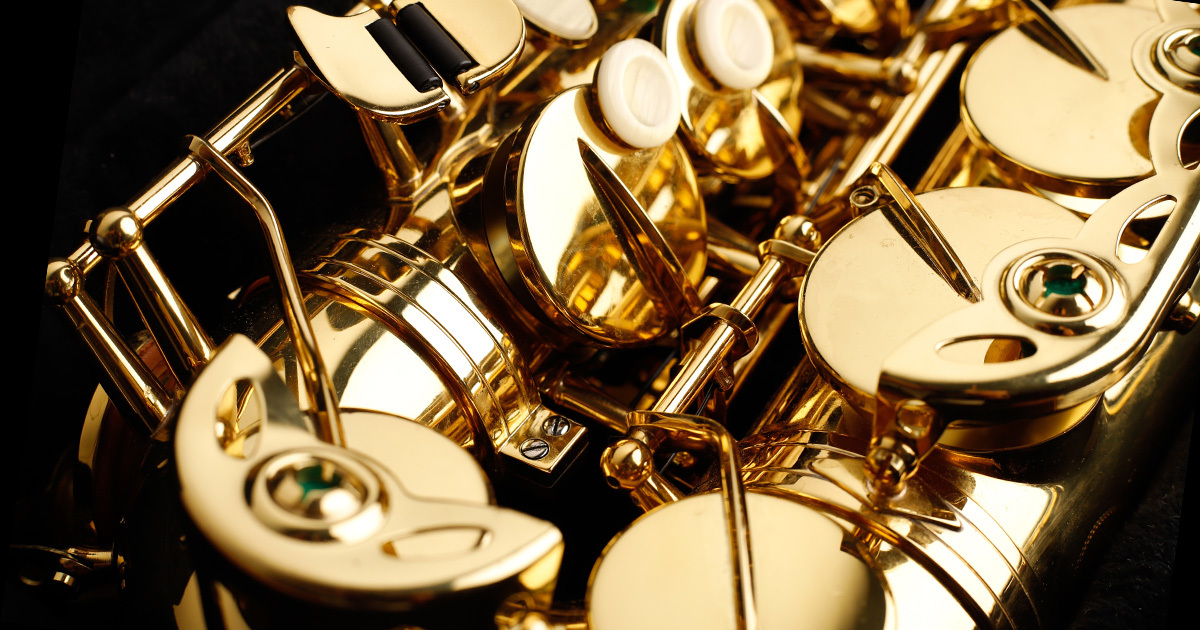Simple Steps to a Beautiful Saxophone Sound
by Andrew Allen
Date Posted: August 21, 2018

The saxophone, when properly played, is perhaps the wind instrument most like the human voice. It is extremely flexible and is capable of a wide range of expression. While the instrument is still sometimes unfairly maligned, a few simple steps can ensure that young saxophonists play with beautiful sounds that blend in any ensemble.
Quality Equipment
First, quality equipment is essential. While performers should never be led to believe that a sound can be bought, a great mouthpiece, reed, and ligature set-up can make the performer’s job much easier. For classical playing and concert ensembles, I prefer the Vandoren Optimum AL3, Vandoren Traditional strength 3 reeds, and an M|O ligature. For even the youngest student, a set-up like that will allow their hard work and dedication to pay off much quicker, with no unnecessary struggles.
Form an Embouchure
The saxophone embouchure is still often misunderstood. A collapsed chin, puffed out cheeks, and the like will never lead to the best sound. Likewise, the saxophone embouchure should not be overly tense or restricted. Instead, follow a simple step-by-step process for best results.
First, for a great embouchure, rest the weight of the head (through the top teeth) on top of the mouthpiece. The neckstrap should be pulled up to a position where this can be achieved with the head in a natural, “looking-straight-ahead” position. For those students who find the vibrations traveling through the teeth from the mouthpiece off-putting (and for any who want to protect their mouthpieces from sharp teeth), a plastic or rubber mouthpiece patch is vital.
Next, the lower lip should be rested on the lower teeth, not pulled over them. The reed should rest on the puffiest portion of the lower lip. Indeed, before the embouchure is sealed, the corners of the lips should be pulled in towards the center, further puffing up the lower lip. Finally, the embouchure should be sealed, with the lower jaw pointed down, and with plenty of space between the back teeth. There should be no upward pressure from the lower jaw.
Proper Air Support
Next, the matter of air should be considered. The saxophone is a wind instrument, and an inefficient one at that! It requires a steady stream of charged air, no matter the dynamic being performed. Often, young players are told from the beginning of their performance careers to “Back off!” Unfortunately, this often leads to anemic playing that is unstable in the extremes of register and dynamic. Instead, young players should be allowed to play out a bit more (with controlled sounds, of course), until they have had time to develop. Then, it will be much easier to perform even at the lowest dynamic and in any register with a quality, in-tune sound.
"...a great mouthpiece, reed, and ligature set-up can make the performer’s job much easier." - Andrew Allen
Mouthpiece Exercise
A simple tool can be utilized to help insure proper embouchure tension and airstream support. While not foolproof, playing reference pitches on the mouthpiece alone can get any student much closer to proper playing techniques. For the soprano saxophone, a concert C#6 (two octaves above middle C) should naturally come out when the mouthpiece alone is played. Similarly, the alto mouthpiece should produce a concert A5, the tenor a G5, and the baritone a D5. If any given mouthpiece is being played higher (or if the student seems to be constricting so much that no pitch comes out), that may point to too much tension in the embouchure. Inversely, a too-low pitch is a byproduct of too loose of an embouchure, too slow of an airstream, or a combination of the two.
Listening
Once the basics of tone production are comfortable for the student, they should be encouraged to listen to as many great tonal examples as possible. In this day of YouTube, there are a wealth of both wonderful and terrible role models at the students’ beck and call, so some professional guidance is in order. A few of my favorite performers to introduce to young students include Arno Bornkamp, Claude Delangle, Clifford Leaman, Joe Lulloff, and Taimur Sullivan, among others.
With these simple pointers, students of any age will be much more likely to be able to consistently play with a beautiful saxophone sound. Then they and all those around them will be able to enjoy what truly is the most voice-like of wind instruments!